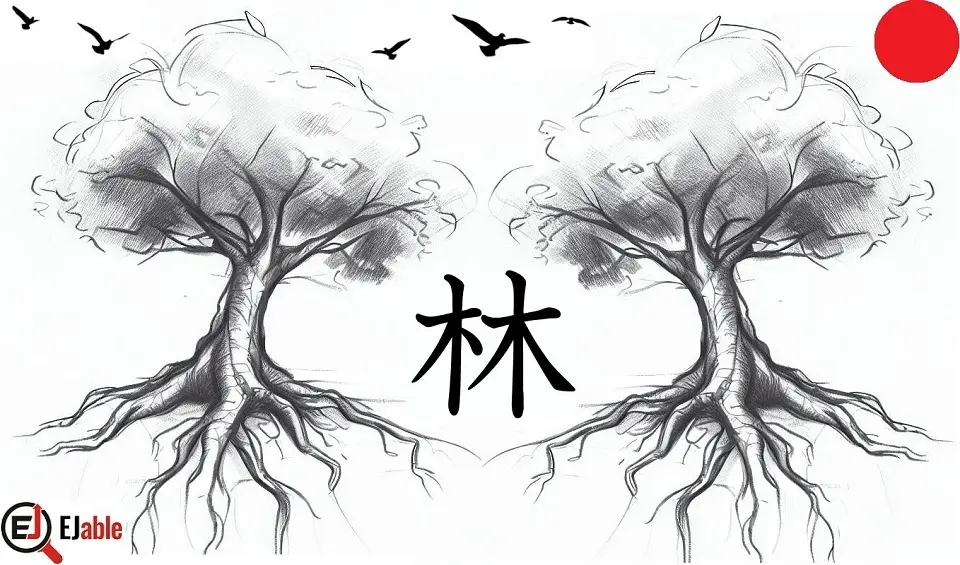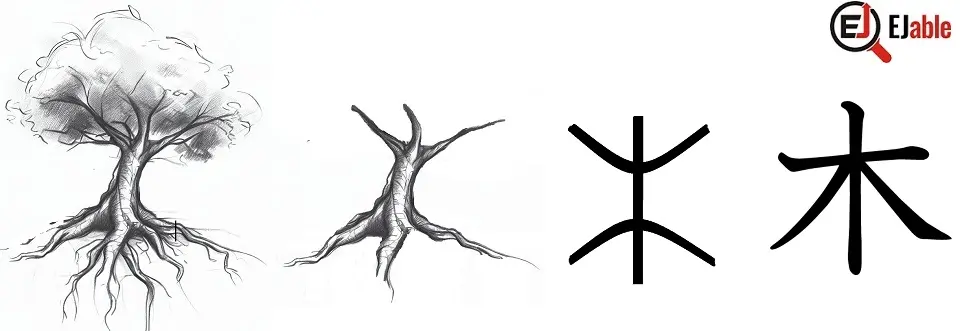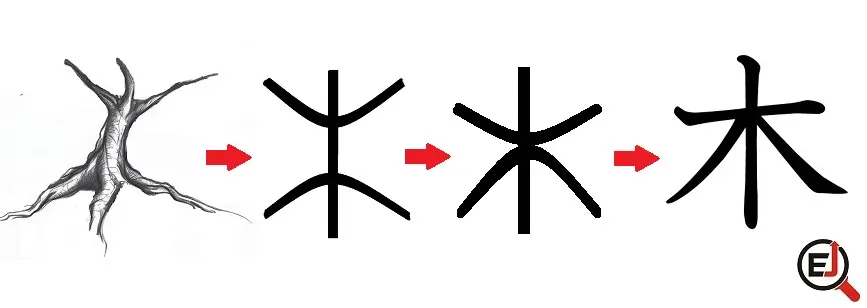Kanji for Grove or Group of Trees (林, Hayashi)

The Japanese kanji for “grove”, a “group of trees,” or “small woodland” is 林. The Kunyomi or the Japanese pronunciation of the Kanji 林 is “hayashi” (はやし), and the Onyomi (Chinese) pronunciation is “rin” (リン).
Grove’s Kanji is constructed with 8 strokes. This Kanji is a part of the JLPT N2 syllabus. In Japanese schools, this Kanji is taught in grade 1.
Origin of the Kanji 林 for Grove or Group of Trees
The kanji 林 is a compound of two 木 (tree) characters side by side. In its very initial form, it depicted two trees standing together, symbolizing a small group of trees, a grove, or a woodland. It’s a representation that indicates several trees but not enough to form a forest.
In ancient Chinese scripts, you can literally see two tree symbols next to each other, which made the meaning quite intuitive. As with many kanji, the character has been simplified and standardized over time, but even in its modern form, the concept is clear: multiple trees together.
This doubling or repetition of characters to indicate a plural or intensified form is a common technique in kanji. For instance, Kanji 人 (hito) means person, but when doubled as 人々 (hitobito), it means “people” or “persons.”
Usage of the Kanji 林
The concept of 林 has extended beyond the literal sense of “grove.” The repeated element in the character has led to its usage in contexts that imply repetition or things that come in pairs.
However, in everyday Japanese, 林 is most commonly associated with trees. It appears in various compound words, such as 林業 (ringyō), meaning “forestry,” and 林立 (rinritsu) meaning “standing thick,” often used to describe buildings or trees standing densely together.
How to Remember Grove’s Kanji 林
If you remember the Kanji for tree or Ki, remembering the Kanji for the Grove, a small woodland, or a group of trees does not take any additional effort. You make a pair of the tree’s Kanji to represent a group of trees or a grove.
However, please remember that the Kanji 林 is not a compounded Kanji of two “Ki” Kanji (木). The Kanji 林 is a beautiful combination of the Kanji of a tree combined with the Kanji radical of 木.
Though the article on the Kanji 木 (Ki) offers a way to remember that Kanji, for your ready reference, please find the same visual representation of the origin and evolution of the Kanji 木:


Simplification of the Shape of Kanji


林 in Compounded Japanese Words
The Kanji for a grove, i.e., 林, appears in other compounded words. There are 32 Japanese words that begin with the Kanji 林, and it appears in 161 words.Following are some compound words that use the kanji 林 (Hayashi or rin) for “grove”:
- 林業 (ringyō): Forestry.
- 竹林 (chikurin): Bamboo grove.
- 林立 (rinritsu): Standing thick/dense; often used to describe numerous buildings or trees standing closely together.
- 山林 (sanrin): Mountain Forest or woodland.
- 果樹園 (kajuen): Orchard; though 林 is not directly in this word, it’s related as 林 often refers to smaller groupings of trees, similar to orchards.
- 林道 (rindō): Forest Road or path.
- 松林 (shōrin): Pine grove.
- 林火 (rinka): Forest fire.
- 林冠 (rinkan): Canopy (of a forest).
- 針葉樹林 (shinyōjurin): Coniferous forest.
- 水源林 (suigenrin): Water source forest, or a forest that acts as a water source for a region.
- 混交林 (konkōrin): Mixed Forest, one with both deciduous and coniferous trees.
- 保護林 (hogorin): Protected Forest.
- 市街化調整区域 (shigaika chōsei kuiki): Urbanization control area; an area where urban development is restricted to protect natural landscapes, including forests and groves.
- 林産業 (rin sangyō): Forest industry.
Remember, while all these words contain the kanji for “grove,” the meanings can range from directly related to forests to more abstract or broad concepts influenced by the idea of trees or woodlands.
Do check other Kanji characters on the page “How to Remember Kanji“.


A long-term ex-pat in Japan, Himanshu comes with an IT background in SAP consulting, IT Business Development, and then running the country operations of an IT consulting multinational. Himanshu is the co-founder and Managing Director of ReachExt K.K. and EJable.com. He is also an Advisory Board Member of a Silicon Valley AI/IoT startup.

